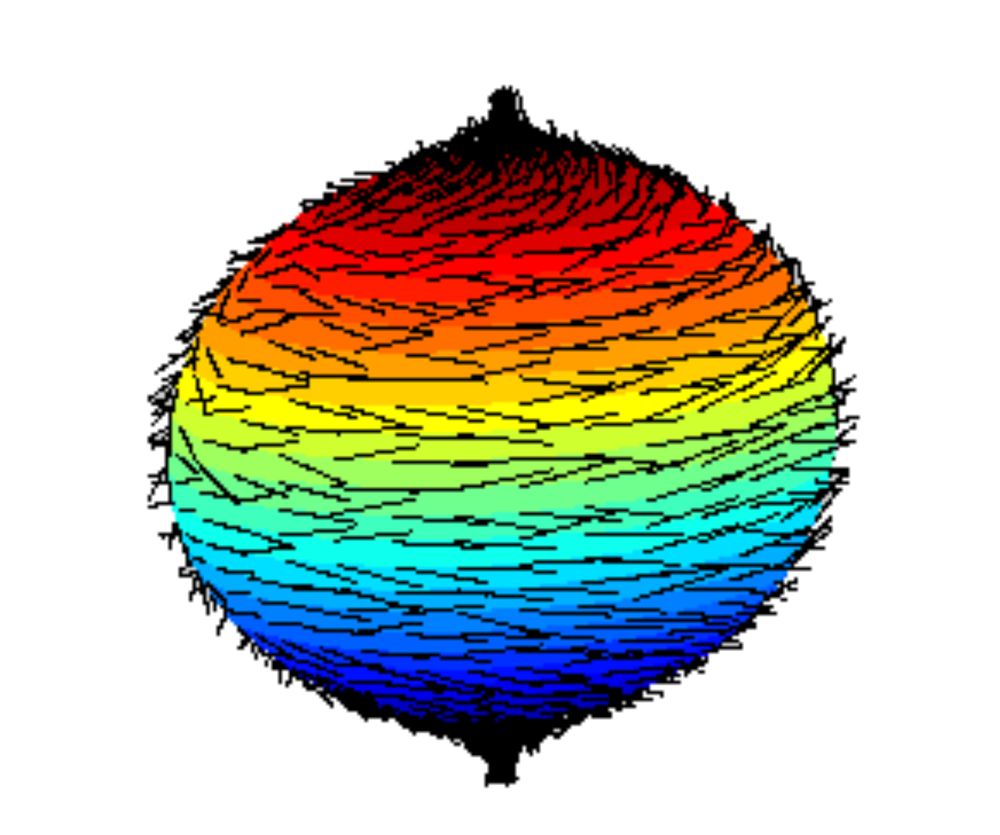
If you’re in #Munich 🥨 and curious about decision-making, perception, and cognition through a translational lens, join us for a seminar I’m hosting on Oct 30 with three fantastic speakers: @jkesby.bsky.social (visiting from 🇦🇺), @miguelbengala.bsky.social, and @jacob-lab.bsky.social 🧠💡
28.09.2025 19:24 — 👍 10 🔁 6 💬 3 📌 1

Hosting a WebSite on a Disposable Vape
Someone's trash is another person's web server.
you heard of running Doom on random gadgets but have you ever heard of…
“Hosting a WebSite on a Disposable Vape”
bogdanthegeek.github.io/blog/project...
this explains how!
((the internet is healing 😌))
#IndieDev
28.09.2025 08:20 — 👍 296 🔁 90 💬 2 📌 2
Just back from this - I was the misfit invited speaker who knows nothing about psychology. It was really educational for me, expanded my view of theory construction problems in the human sciences.
27.09.2025 08:06 — 👍 29 🔁 2 💬 1 📌 0
Introducing hMFC: A Bayesian hierarchical model of trial-to-trial fluctuations in decision criterion! Now out in @plos.org Comp Bio.
led by Robin Vloeberghs with @anne-urai.bsky.social Scott Linderman
Paper: desenderlab.com/wp-content/u... Thread ↓↓↓
#PsychSciSky #Neuroscience #Neuroskyence
25.09.2025 09:13 — 👍 50 🔁 30 💬 3 📌 0
"Learning to be confident: How agents learn confidence based on prediction errors"! Now out in @cognitionjournal.bsky.social led by @pierreledenmat.bsky.social
Paper: desenderlab.com/wp-content/u... Thread ↓↓↓
#AcademicSky #PsychSciSky #Neuroscience #Neuroskyence
25.09.2025 08:44 — 👍 19 🔁 7 💬 1 📌 0

An array of 9 purple discs on a blue background. Figure from Hinnerk Schulz-Hildebrandt.
A nice shift in perceived colour between central and peripheral vision. The fixated disc looks purple while the others look blue.
The effect presumably comes from the absence of S-cones in the fovea.
From Hinnerk Schulz-Hildebrandt:
arxiv.org/pdf/2509.115...
24.09.2025 10:16 — 👍 561 🔁 210 💬 24 📌 36
Unfortunately, for the variance on the probability scale, the speed up vanishes.
23.09.2025 15:39 — 👍 0 🔁 0 💬 1 📌 0
Thanks for the kind words.
Glad to see that people already account for this in some packages. Not sure whether it helps a lot, but using the direct computations instead of using numerical integration may still speed up things a bit (about 20 times on my machine)
23.09.2025 15:39 — 👍 0 🔁 0 💬 1 📌 0
The good news: We provide a simple, correct computation that accounts for this variability, ensuring accurate group-level inferences. This fix is crucial for reliable conclusions in all cognitive models with constrained parameters.
Check out the details to improve your hierarchical analyses!
10.09.2025 14:40 — 👍 1 🔁 0 💬 0 📌 0

A Figure with two panels, demonstrating the transformation of a normally distributed random variable resulting from transforming the values using the standard normal CDF to the interval 0 to 1. The figure shows the discrepancy between the mean of the transformed values and the result from simply transforming the mean of the normal distribution using the standard normal CDF.
The left side shows a normal distribution with low variance, such that the transformed values also show small variance and a symmetrical shape. The mean of the transformed values and the value resulting from transforming the mean directly coincide.
The right side shows a distribution with high variance. Due to the non-linearity of the normal CDF, the distribution of transformed values is non-symmetrical and highly skewed. The mean of the distribution is therefore pulled to the center of the range 0 to 1, compared to the result from directly transforming the mean of the normal distribution.
(e.g. the standard normal CDF) and normal distributions to fit the group-level distribution.
But we cannot simply apply the same transformation to the mean of the real-valued normal distribution to derive the group-level mean on the parameter scale! This ignores individual variability.
10.09.2025 14:40 — 👍 0 🔁 0 💬 1 📌 0

Line graphs comparing correct and biased computations for exponential and probit (Φ) transformations in statistical modeling. Colored lines show how the bias changes with different group means and standard deviations.
If you’re estimating group-level means of constraint parameters, which are fitted with nonlinear transformations, beware that a common approach can produce biased estimates—especially with high individual variability.
For constraint parameters, we often use nonlinear transformations...
10.09.2025 14:40 — 👍 1 🔁 0 💬 2 📌 0
For all who use Bayesian hierarchical models, have a look at our new preprint, out now together with @linushof.bsky.social @nunobusch.bsky.social and @thorstenpachur.bsky.social
osf.io/preprints/ps...
10.09.2025 14:40 — 👍 18 🔁 12 💬 1 📌 0
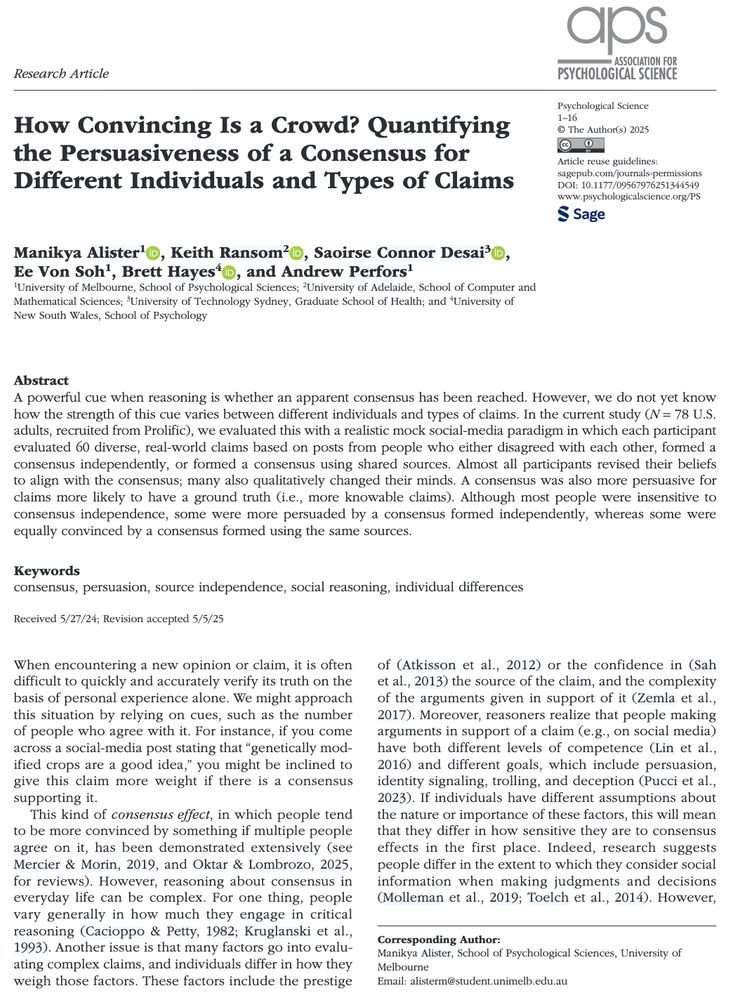
Screenshot of the article "How Convincing Is a Crowd? Quantifying the Persuasiveness of a Consensus for Different Individuals and Types of Claims"
We know that a consensus of opinions is persuasive, but how reliable is this effect across people and types of consensus, and are there any kinds of claims where people care less about what other people think? This is what we tested in our new(ish) paper in @psychscience.bsky.social
10.08.2025 23:11 — 👍 64 🔁 32 💬 5 📌 2
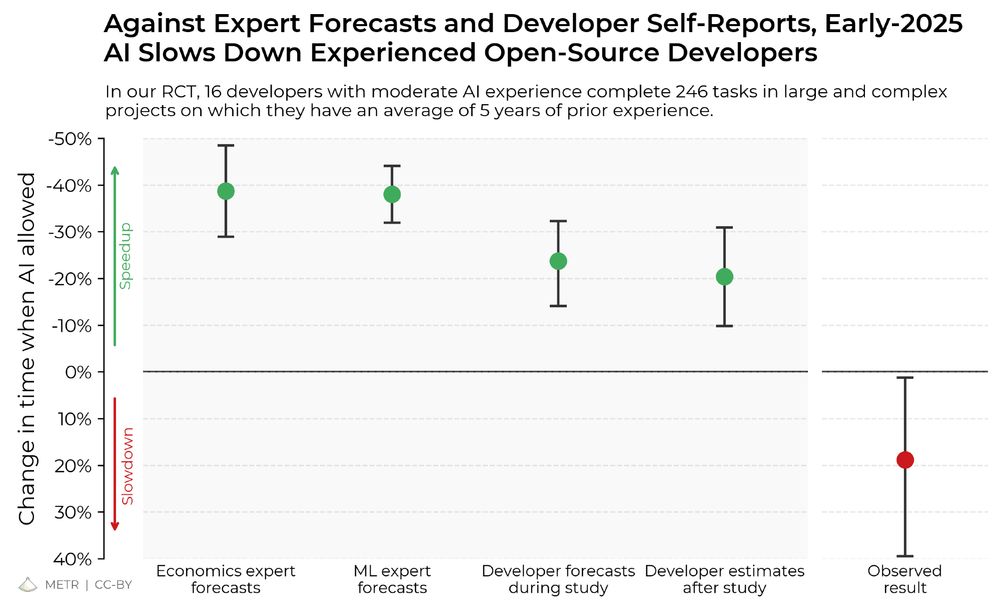
We ran a randomized controlled trial to see how much AI coding tools speed up experienced open-source developers.
The results surprised us: Developers thought they were 20% faster with AI tools, but they were actually 19% slower when they had access to AI than when they didn't.
10.07.2025 19:46 — 👍 6922 🔁 3030 💬 107 📌 625
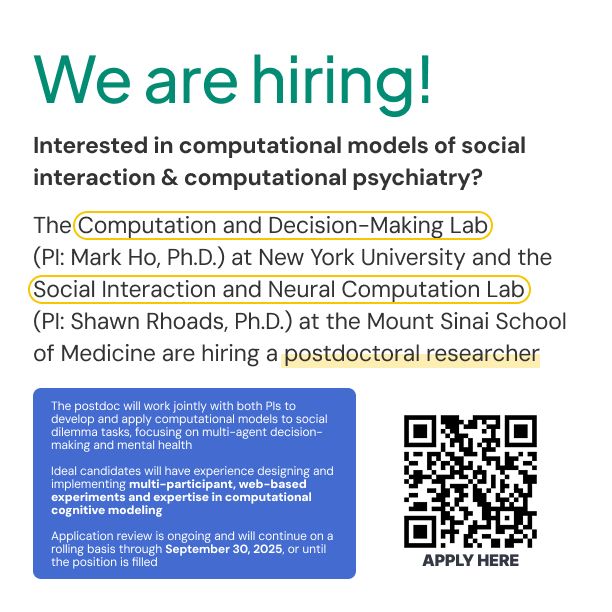
📢 @markkho.bsky.social & I are recruiting a joint postdoc interested in computational models of social interaction & mental health
💻 Ideal candidates have experience w/ multi-player web-based experiments & computational modeling
📅 Apps are reviewed on a rolling basis
🔗 apply.interfolio.com/165809
31.07.2025 15:34 — 👍 11 🔁 11 💬 1 📌 1
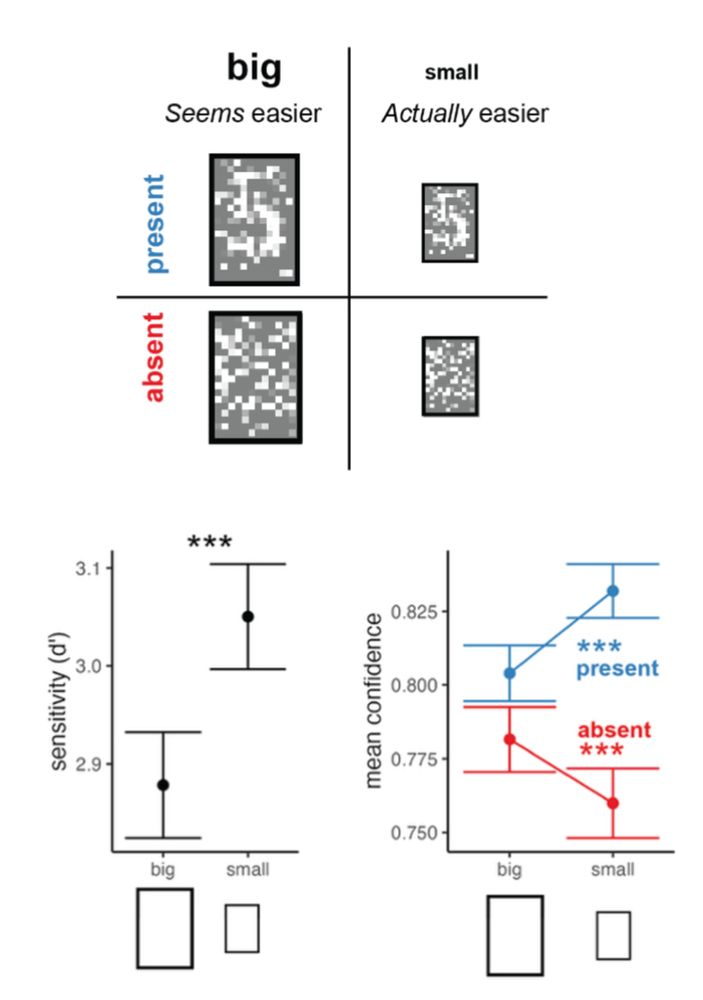
Confidence in absence as confidence in counterfactual visibility: a CogSci proceedings paper with star MSc student Maya Schipper, is now out on PsyArXiv:
osf.io/preprints/ps...
🧵👇
23.07.2025 03:23 — 👍 55 🔁 18 💬 3 📌 0
Research Associate (m/f/x)
🚨 PhD position (75%, TV-L E13) at LMU Munich!
Join our DFG funded META REP project on heterogeneity & replicability in psychology.
Work on meta analysis, simulations, modeling in R/Python.
📅 Apply by July 15
🔗 shorturl.at/939tP
🔗 shorturl.at/2bRLD
👇🧵
27.06.2025 19:07 — 👍 10 🔁 8 💬 1 📌 0
#EduSky A must-read esp. if you use AI tools, are being made to "just try them" at school, or are having your students use them.
04.06.2025 11:32 — 👍 10 🔁 8 💬 1 📌 0
Thanks so much, also for your support and your wisdom. It has been a pleasure to be your Padawan ;)
04.06.2025 16:42 — 👍 3 🔁 0 💬 0 📌 1
🧠 Job Alert: Postdoc Position Available!
We're hiring a postdoc as part of the exciting DFG Research Unit on Belief Updating 🔬
🔍 What we're looking for:
Strong quantitative skills & passion for belief updating research
📍 Location: University of Hamburg
⏰ Duration: 2 years, full-time
🔗 Link below
04.06.2025 09:30 — 👍 2 🔁 4 💬 1 📌 0
🎉 Thrilled to share the press releases of our study 🎉
English from @elife.bsky.social: elifesciences.org/for-the-pres...
German from @uni-hamburg.de: www.uni-hamburg.de/newsroom/pre...
24.04.2025 11:35 — 👍 22 🔁 11 💬 0 📌 0
Dynamic modulation of confidence based on the metacognitive skills of collaborators! Now out in @cognitionjournal.bsky.social New work from
@felixhermans.bsky.social Simon Gaia @majafr.bsky.social
and me! Paper here: pubmed.ncbi.nlm.nih.gov/40262423/ Details ↓↓↓
30.04.2025 12:30 — 👍 13 🔁 6 💬 3 📌 1
Vacancy ID 12054
Postdoc Opportunity in Cognitive Computational Neuroscience 🧠
Join us at TU Dresden (Germany) to model decision-making + brain data using probabilistic modelling
📅 Apply by April 30, 2025
🔗 tud.link/9d2n92
Please share! 🔁
#compneuro #CognitiveNeuroscience #postdoc @bernsteinneuro.bsky.social
17.04.2025 08:51 — 👍 8 🔁 7 💬 0 📌 0
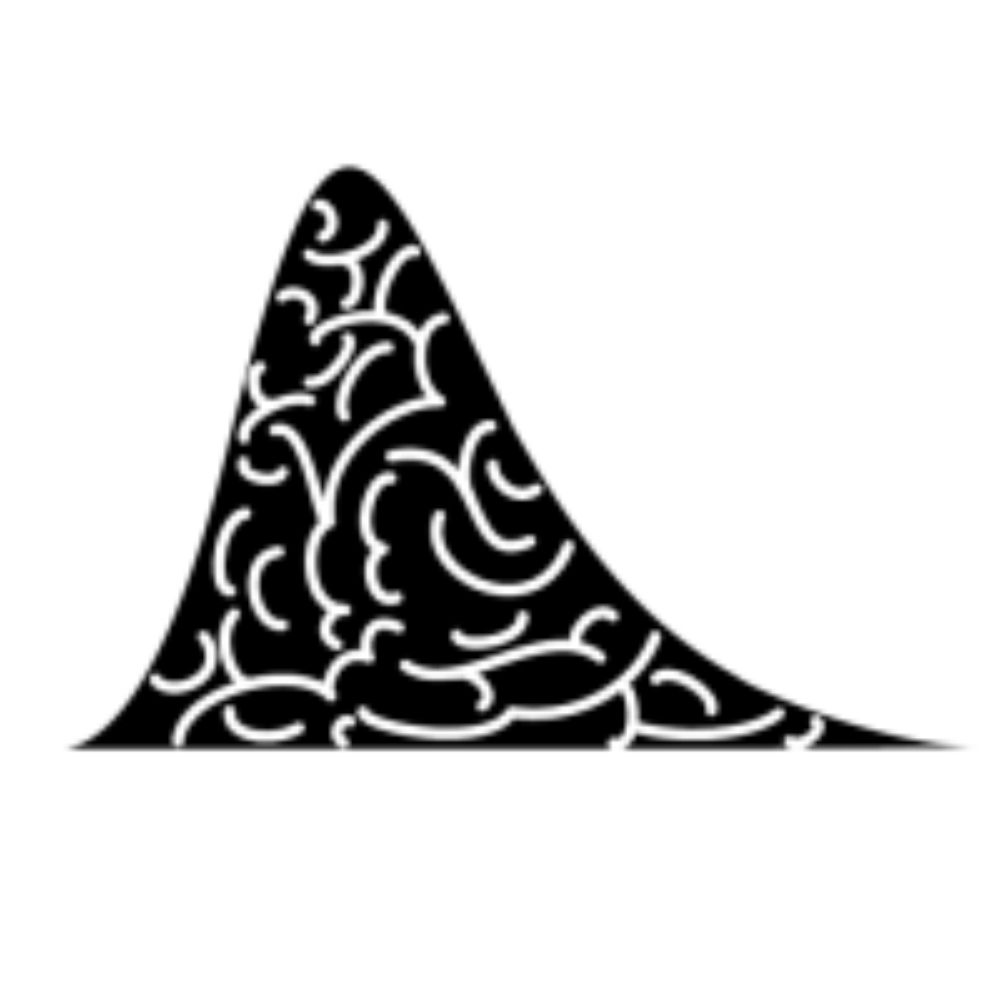
Model-Based Neuroscience and Cognition Summer School
Visit the post for more.
Join us in Amsterdam for the 11th Model-Based Neuroscience & Cognition Summer School. Gain a solid foundation in Bayesian evidence-accumulation modeling and explore its integration with neuroscience or advanced computational frameworks, including reinforcement-learning models. modelbasedneurosci.com
28.03.2025 15:00 — 👍 14 🔁 12 💬 0 📌 0
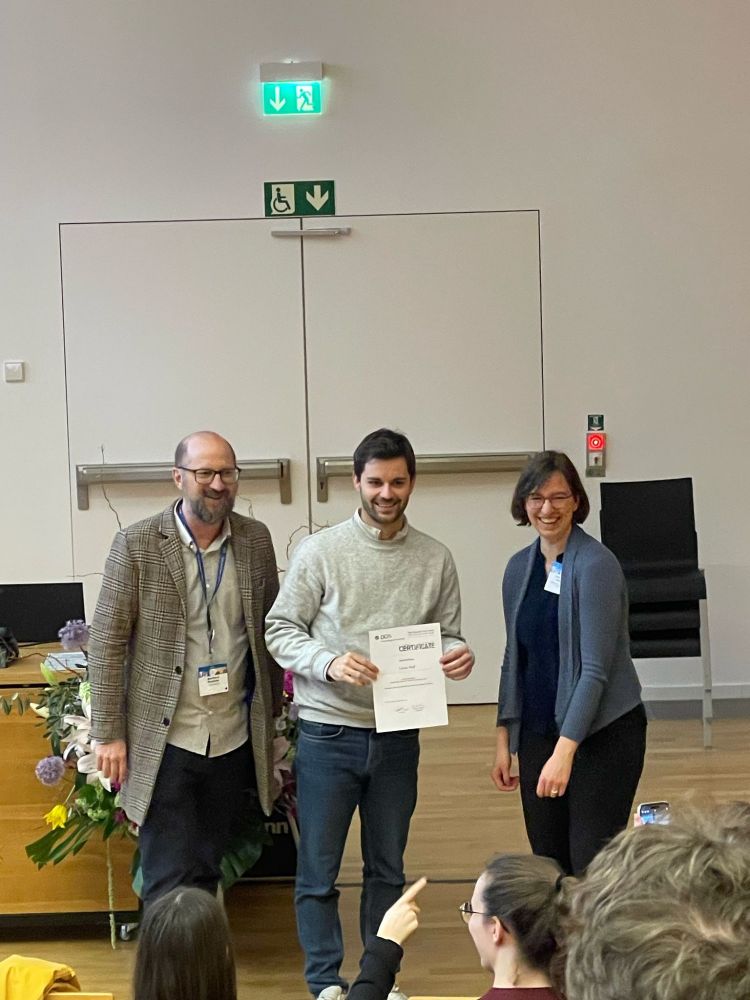
Congratulations to @linushof.bsky.social from our lab @tum.de for being the runner-up at this year’s #teap2025 poster competition! His research shows that people search adaptively in decisions from experience.
14.03.2025 05:43 — 👍 12 🔁 5 💬 0 📌 0
The short paper on the statConfR package together with Sascha Meyen and @sehellmann.bsky.social has now been published. Reviews in JOSS are not only about the paper but also the code, which I think is a great idea, especially for cognitive modelling.
24.02.2025 14:09 — 👍 2 🔁 2 💬 0 📌 0
Based in Córdoba, Argentina, our interdisciplinary team focuses on three main areas: states of consciousness, metacognition—the capacity to reflect on one’s own decisions—and the mechanisms that sustain attention.
https://cognitivesciences.github.io/
Postdoc @ Icahn School of Medicine. Computational Psychiatry. Neuroeconomics. Decision-Making
Web development, data management and visualizations. Consulting services for scientific and r&d communities. https://www.researchelements.org/
PhD Candidate in Statistics, Utrecht University
Creates fake data for a living.
thomvolker.github.io
Natural and artificial general intelligence.
https://marcelbinz.github.io/
PostDoc at Leibniz-Institut für Wissensmedien, Tübingen | Interested in group decision making, group information sharing, crowd wisdom, cognitive modeling
postdoctoral esearcher in Consumer/Cognitive/Social/Personality psych located in Bochum, Germany.
Doctoral student @ TU Darmstadt (Germany) 🎓 | Interested in metacognition, metamemory, memory and learning
Social Cognition Researcher @ Ruhr University Bochum
- Attitude Formation
- Information Sampling
- JDM
PhD student in psychology at concrete jungle
Ruhr-Uni Bochum ✨ | Social Cognition Lab of Hans Alves 👥🧠
Batman & Psychology author, Popular Culture Psychology editor, psych professor/chair, social psychologist, Wheel of Fortune champ. Teach on media, crime, mental health.
16 books, most recently on Stranger Things, Spider-Man, The Handmaid's Tale.
#blue
Postdoc working on human reasoning and the human-AI interaction at LaPsyDÉ, l'Université Paris-Cité 🇦🇺🏳️🌈
https://zoepurcell.org/
Cognitive and decision science at MPI for Human Development & Uni Basel | Data science at therbootcamp.github.io | R, language models, and sustainability (text2sdg.io).
PhD Student @Psychology of Sustainability and Behavior Change in Basel studying pro-environmental decision making and how (dis)information influences climate beliefs.
PhD student @cmdn-lab.bsky.social (PI: @sgluth.bsky.social) at the University of Hamburg modeling dietary and sustainable decision-making - ScieCom enthusiast - all about soccer, rowing, and books 📚
Github: https://github.com/barbaraoberbauer
Researcher exploring pain, depression, and treatment expectations (@Büchel Lab, @Pizzagalli Lab, @SFB/TRR289).
Hopefully with my own lab soon 😇
Hamburg & Boston
DFG Scholar // Aktiv @ Grüne Hamburg
www.kinokulturhamburg.de
Der Bundestag verhandelt öffentlich. (Art. 42 GG)
📝Sie haben Fragen oder möchten uns etwas mitteilen? 👉 socialmedia@bundestag.de
Impressum: https://www.bundestag.de/impressum
Netiquette: https://www.bundestag.de/services/netiquette_som/netiquette-710192
I often inspire envy, as I get paid to stare at hot models run all day long | Postdoc @Mizzou |
| #Ψ #AI #modeling #decisions #cogsci |🧠👩🏼💻|
| Bucket hat enthusiast |









